Marnbauchon Garden (만바우촌가든)
8.2Km 2024-02-13
5173-17 Gyeongdong-ro, Jinbo-myeon, Cheongsong-gun, Gyeongsangbuk-do
054-872-2263, 2264
Marnbauchon Garden, a Korean restaurant nestled near Juwangsan National Park and Dalgipokpo Falls in Cheongsong, offers a delightful culinary experience. The star of their menu is the dak baeksuk, a wholesome whole chicken soup. This delectable dish is crafted by simmering Juwangsan Sinchon mineral water, renowned for its rich mineral content, along with medicinal ingredients like ginseng, jujube, and mung beans. In addition, the restaurant boasts an inviting open-air yard and bungalow facilities, providing a serene setting where patrons can unwind and partake in various activities following their meal.
Jeolgolgyegok Valley [National Geopark] (절골협곡 (청송 국가지질공원))
12.0Km 2025-01-14
San 124, Jusanji-ri, Cheongsong-gun, Gyeongsangbuk-do
+82-54-870-6111
Jeolgolgyegok Valley is located along the mountain ridgeline connecting Gamebong Peak and Wanggeoam Rock in Juwangsan Mountain. It stretches for 5 kilometers from Jeolgol Valley Visitor's Center to Daemun Bridge. The valley is formed of vocanic tuffs that were welded and compacted after cooling down, which resulted in forming vertical cracks, leaving rocks to fall out and create a steep valley cliff.
Jusanji Pond [National Geopark] (주산지 (청송 국가지질공원))
12.6Km 2025-03-15
Jusanji-ri, Cheongsong-gun, Gyeongsangbuk-do
+82-54-870-6111
Jusanji Pond is a small reservoir located in Juwangsan National Park. It is a man-made pond that was dug out in August, 1720 and completed in October the year after. The pond has been used as a source of water for agricultural use as well as for drinking water. Even though it is small in size, about 200 meters long and 8 meters deep, the pond has never dried up from any drought.
150-year-old willow trees are rooted in the pond, which makes a fantastic balance with the surroundings, creating a picturesque scenery found nowhere else.
YeongYang Doodle Village (영양 두들마을)
13.9Km 2020-02-10
62, Dudeulmaeul-gil, Seokbo-myeon, Yeongyang-gun, Gyeongsangbuk-do
+82-10-7373-8337
Located in the administrative district of Wonri-ri, Seokbo-myeon, Yeongyang-gun, Gyeongsangbuk-do, Doodle Village's name means ‘village on a hill’ in Korean. In 1640, Lee Sim-yeong who used the pen name Seokgye, decided to build the village as an escape during the second Manchu invasion in Korea. His descendants, the family of Lee Jae-ryeong have lived and continued to build up the village since his settlement. In the year 1899 during the Joseon dynasty, Gwangjewon, the national hospital back then, was also established nearby. After the last syllable of Gwangjewon, the village was also called Wondoodle or Wonri
The village master, Seokgye, lived in his own house called Seokgye Gotaek (old Hanok house) and Seokgye Seodang, a private learning institute where he taught his students. The village also treasures many cultural heritages including 30 houses, a memorial stone for Madam Jang's first cookbook written in Hangeul (Korean alphabet) and Gwangsan Literature Laboratory, set up by famous writer Lee Mun-yeol.
Hwamaecheon Stream wraps around the village and on the rocky cliff hugging the stream, the fourth son of Master Seokgye set up Dongdae, Seodae, Nakgidae, and Sesimdae.
The village was designated as a cultural village in 1994 by the government.
Jirye Arts Village (지례예술촌)
14.2Km 2024-05-29
427 Jiryeyesulchon-gil, Andong-si, Gyeongsangbuk-do
+82-54-852-1913
Located in Andong, Jirye Arts Village first formed as a result of the construction of Imha Dam. When a small neighborhood in Jirye-ri, Imdong-myeon was at the risk of flood due to the dam, Kim Won-gil, the village leader at the time, relocated and rebuilt ten houses to the current location in 1986. This neighborhood, now known as Jirye Arts Village, was designated as an art village in 1990 and since then, many artists settled in the neighborhood and formed a community of culture and art. Today, Jirye Arts Village offers a variety of opportunities to experience Korean culture through hands-on arts and crafts as well as diverse cultural activities.
Mukgyeseowon Confucian Academy & Mukgye Head House of Andong Kim Clan (묵계서원 및 안동김씨 묵계종택)
15.2Km 2024-05-29
1736-5 Chunghyo-ro, Giran-myeon, Andong-si, Gyeongsangbuk-do
Mukgyeseowon Confucian Academy was founded in 1687, but was mostly destroyed in 1869, leaving just the lecture hall behind. Recently, these removed buildings have slowly been rebuilt to restore the academy to its former glory.
Mukgye Head House of the Andong Kim Clan is located near the Confucian academy and features a shrine to Bobaekdang, the founder of the academy. The house was built in a square shape with an open courtyard in the middle and has been maintained in good condition.
Manhyujeong Pavilion (만휴정)
15.8Km 2024-11-29
42 Mukgyehari-gil, Giran-myeon, Andong-si, Gyeongsangbuk-do
+82-54-852-6800
Manhyujeong Pavilion is the pavilion of Bobaekdang Kim Gye-haeng and was built in 1500. The present building shows a modified appearance through remodeling, and only a part shows the style of the late Joseon dynasty. Kim Gye-haeng was a civil servant in the early Joseon dynasty and held various government posts. However, when he met the tyranny of Yeonsangun, he abandoned the government post and returned to his hometown. After that, a small pavilion was built along Seolmot (currently Sosan 2-ri), but since it was next to the road, he built Manhyujeong Pavilion in a quieter place. If you cross the stream from Mukgyeseowon Confucian Academy and enter the mountain, you can find it located in a magnificent valley that faces southeast and has a waterfall flowing over the rocks.
◎ Travel information to meet Hallyu’s charm - variety show"I Am Solo"
This is another famous site in Andong that was featured in Season 16 of “I Am Solo.” The Manhyujeong pavilion, which awaits visitors alone in a peaceful forest, and the log bridge, which is the only path leading to the pavilion, seem to represent the participants' feelings.
Cheonji Sikdang (천지식당)
16.6Km 2021-03-24
90, Utjangteo-gil, Andong-si, Gyeongsangbuk-do
+82-54-822-7008
You can eat maeuntang (fish stew) made with fresh freshwater fish. This Korean dishes restaurant is located in Andong-si, Gyeongsangbuk-do. The representative menu is spicy freshwater fish stew.
Cheongsong Eoreumgol Valley (Cheongsong National Geopark) (청송 얼음골 (청송 국가지질공원))
18.3Km 2024-11-20
1 Naeryong-ri, Juwangsan-myeon, Cheongsong-gun, Gyeongsangbuk-do
Cheongsong Eoreumgol Valley is a gorge located on Juwangsan Mountain in Cheongsong. It is known for its warm winters and cool breezes in the summer, creating a mystical atmosphere. In May 2017, it was recognized for its geological value and certified as a UNESCO Global Geopark. During the summer, when the temperature exceeds 32 degrees Celsius, ice forms in the valley, melting when the temperature drops below 32 degrees Celsius. The area boasts impressive rock formations and stunning landscapes, attracting many tourists with its springs, and artificial falls.
Suaedang (안동 수애당)
19.1Km 2024-12-20
1714-11 , Sugogyonggye-ro, Andong-si, Gyeongsangbuk-do
+82-54-822-6661
Suaedang House in Andong, Gyeongsangbuk-do, was built in 1939 by independence activist Soo Ae Yu Jin-geol, and is a Gyeongsangbuk-do cultural asset. The hipped-and-gabled pavilion and the ㄱ-shaped gobangchae (female servants’ quarters) face each other across the courtyard, and the house has a 10-metre lofty gate. Suaedang was moved to its current location in 1987 due to the construction of the Imha Dam. The room and Daecheongmaru are red clay-walled and natural painted. The view of the lake from Suaecang is very beautiful.
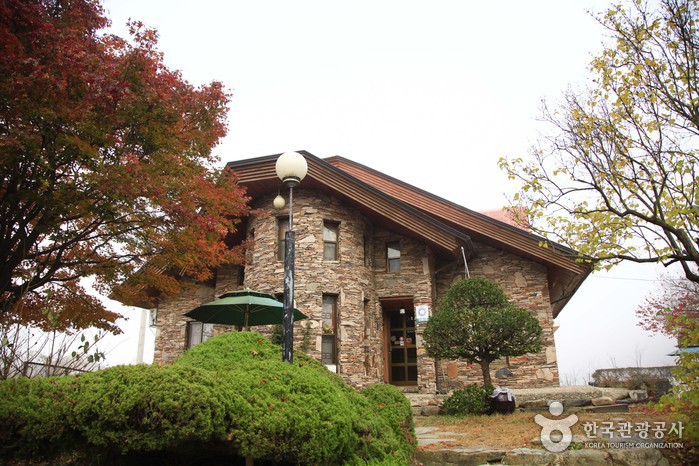

![Jusanji Pond [National Geopark] (주산지 (청송 국가지질공원))](http://tong.visitkorea.or.kr/cms/resource/84/2616884_image2_1.jpg)
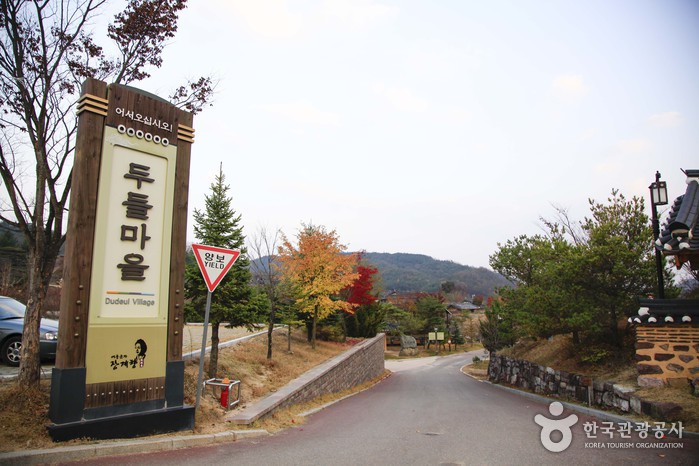
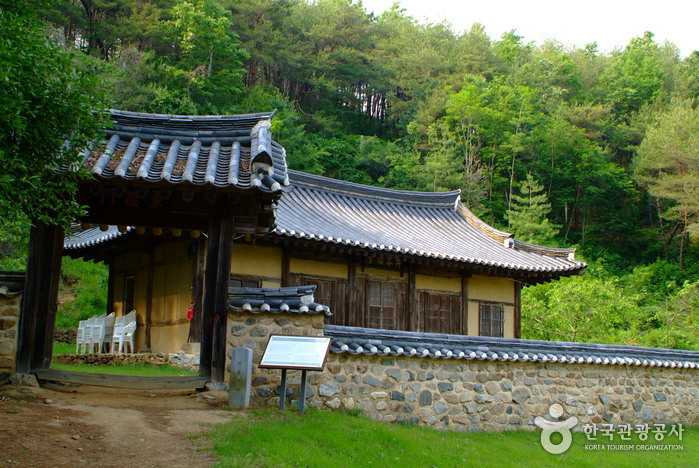
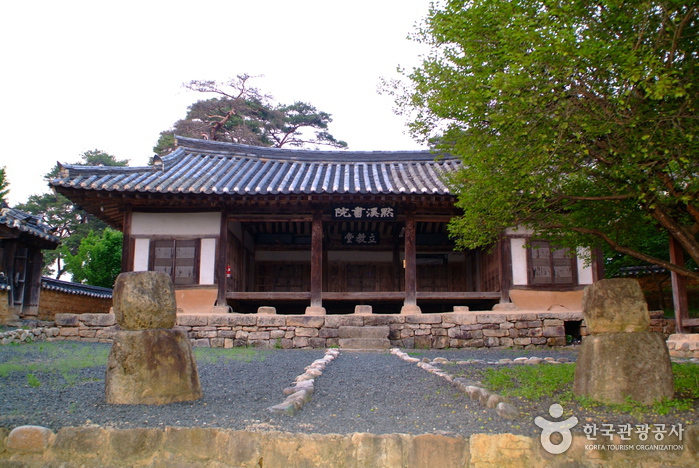
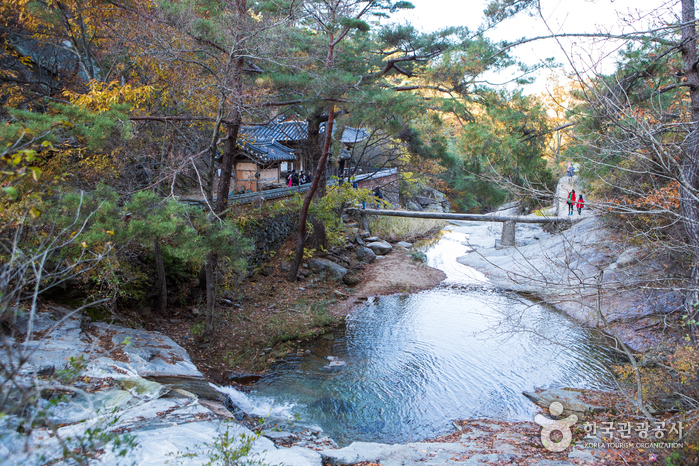
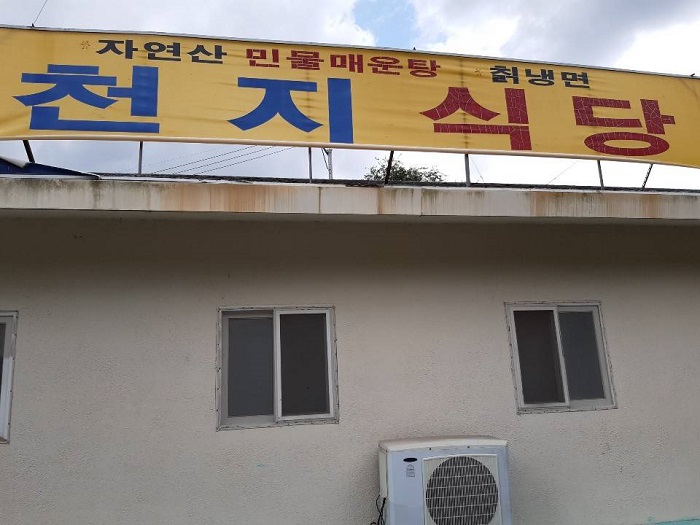
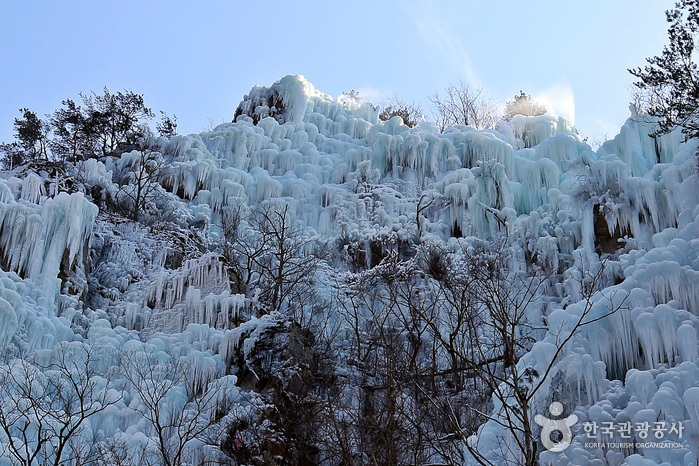
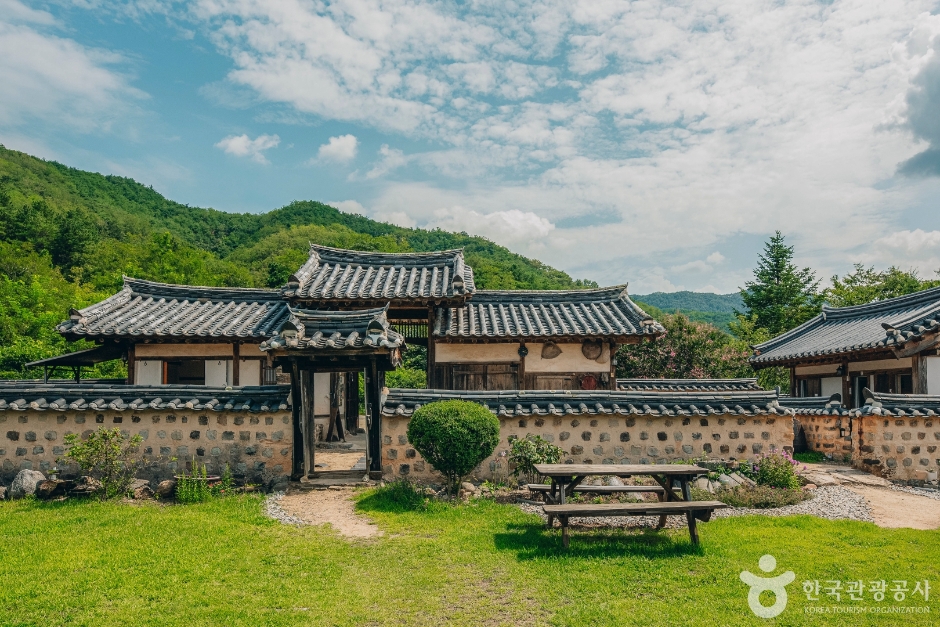
 English
English
 한국어
한국어 日本語
日本語 中文(简体)
中文(简体) Deutsch
Deutsch Français
Français Español
Español Русский
Русский